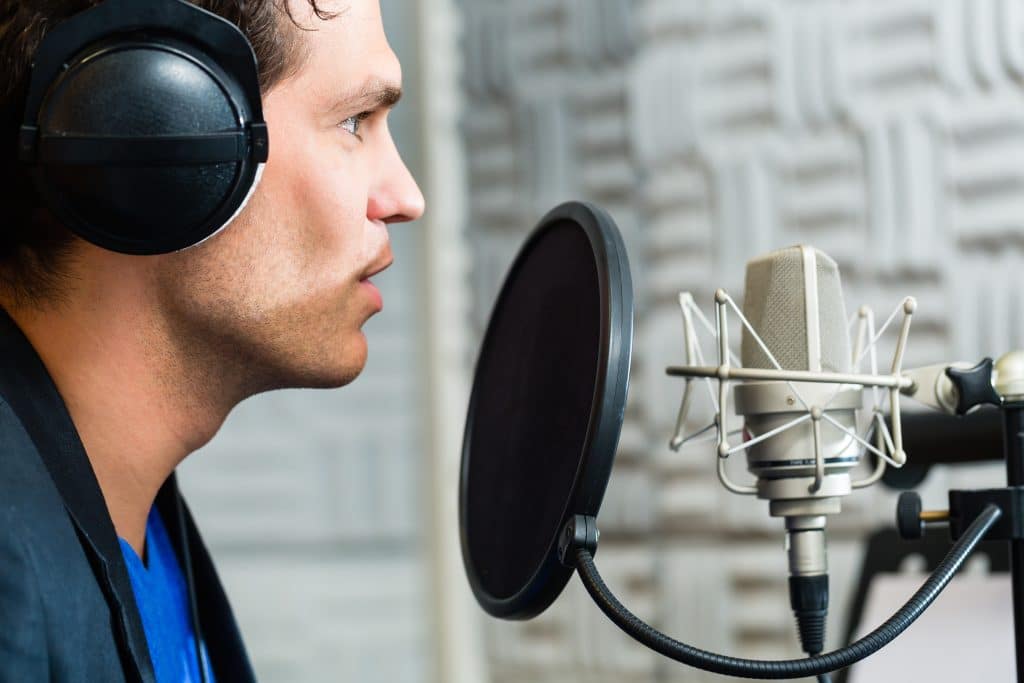How to choose and record the perfect voiceover for explainer videos
A good voiceover really brings an explainer video to life. It conveys emotions, reinforces the message and ensures that viewers feel addressed. But how do you find the perfect voice and what should you pay attention to when recording? Here are some tried-and-tested tips.
Choosing the right voice
The voice of an explainer video significantly influences the impact of the message. You should consider the following factors when making your selection:
Target group
Who should see the video? A young, dynamic voice can be suitable for start-ups, while a serious voice is better suited to a bank or insurance company.
Tone of voice
Should the voice sound warm and inviting, factual and informative or humorous and relaxed?
Language style
Natural, authentic and pleasant to listen to. Voices that are too artificial or monotone can quickly put viewers off.
A test with different voice actors can help you make the best choice. Swiss platforms such as Sprecher Agentur or Babilon or worldwide agencies such as Voice123 offer a large selection of professional voice talents.
The importance of a voice becomes particularly clear in movies. When there is a change in a well-known dubbing voice, many viewers notice this immediately and it can even cause confusion or rejection. For example, Homer Simpson’s change of voice in the German dubbing caused heated discussions. The situation is similar with explainer videos – the voice has to match the message and style for the video to be convincing.
Tips for recording
A high-quality voiceover recording plays a crucial role in underlining the professional impression of a video. Especially in marketing, where every detail counts, the sound of the voice can make all the difference. Here are some detailed tips to help you achieve the perfect voiceover recording:
- Quiet environment Background noise is one of the biggest enemies of a clear and professional recording. Make sure that you work in a quiet environment where no disturbing noises such as street noise, conversations or electronic devices can be heard. A soundproofed room or a small studio specifically designed to minimize outside noise is ideal. If you don’t have a professional room available, simple soundproofing using blankets or curtains can also help to improve the acoustics.
- Good microphone The microphone is the heart of every voiceover recording. You shouldn’t cut corners here. A high-quality condenser microphone like the Rode NT1-5th Generation or the Audio-Technica AT2020 delivers a clear, precise voice recording with minimal distortion. These microphones are known for their ability to capture fine details in the voice and produce a natural sound quality. Make sure you also use the right accessories such as a pop shield to prevent unwanted noises such as ‘plosives’ (e.g. with the letters ‘P’ or ‘B’).
- Consistent speaking style An even and natural speaking style is essential to ensure a pleasant listening quality. Try to speak at a moderate pace and with a consistent volume – neither too hasty nor too monotonous. It is important to find a balance that provides both dynamics and clarity so that your listeners can easily follow the content. Make sure that your intonation is not too stiff or exaggerated, but natural and lively.
- Record several takes
Perfection is rarely achieved on the first attempt, so don’t be too hard on yourself if not everything fits straight away. It is advisable to record several takes of the same passage. This will allow you to choose the best version later in post-production, where the intonation, emphasis and timing best suit the message of your video. If you can record different versions, you have the freedom to choose the take that best suits the mood or tone of the video.
Many professional voice actors have their own studios and can deliver the finished spoken text in high quality. This eliminates the need for in-house recording and the voiceover can be integrated directly into the video.
In professional dubbing studios, voice actors often record several versions of a sentence in order to achieve the perfect intonation and emotion. This approach can also be helpful for explanatory videos to make the voiceover sound as natural and appropriate as possible.
A good example is the use of voices in commercials: The iconic voice of Morgan Freeman or David Attenborough gives brands credibility and depth. If their voice were suddenly replaced by a less distinctive one, the effect would immediately diminish.

Editing the voiceover
A professional voiceover is an indispensable element for any high-quality explainer video. But the real magic often only happens after the recording, when the voiceover is optimized through targeted post-production. This step involves refining the raw material and adjusting the tonality so that it fits perfectly into the visual context of the video.
Noise removal: clarity right from the start
Background noise and interference such as the quiet humming of computers or the clinking of cups can significantly impair the clarity of the voiceover. Tools like Audacity or Adobe Audition offer powerful noise removal functions. Disturbing noises are automatically identified and eliminated without affecting the quality of the voice itself.
Adjust the volume: Finding the right balance
A balanced volume level is crucial in order to make the voiceover audible in both quieter and more dynamic scenes. The voiceover should be neither too loud nor too quiet, but should blend harmoniously into the overall sound mix of the video. The aim is to ensure that viewers do not have to make an effort to understand the speaker, while the overall audiovisual experience does not come across as overloaded or unpleasant.
Editing and timing: naturalness through fine-tuning
A voiceover that sounds good in its raw version can still sound unnatural due to unnecessary pauses or transitions that are too fast. In post-production, the timing of the pauses is therefore often adjusted to optimize the rhythm of the text. Pauses in the right places ensure that the speaker delivers the information in an understandable and pleasant way. In an explanatory video, a small pause after an important piece of information can significantly improve clarity for the viewer. For marketers, this means that the video has a calm yet concise narrative that holds the attention of the target audience.
Make targeted use of effects: The voice comes alive
With a light compressor and equalizer effects, the speaker’s voice can be made clearer and more present. A compressor ensures that loud parts are not too intrusive and quiet parts are not too difficult to understand, while an equalizer adjusts the frequencies so that the voice sounds fuller and more balanced. These effects help to make the voiceover even more emotional and inviting, which is particularly beneficial for marketing videos. It’s all about creating a pleasant audio experience that captures the interest of the target audience while emphasizing the professional nature of the company.
From the film industry: The difference makes the difference
In film production, the difference between the raw recording of an actor and the final product often becomes clear: the raw recordings often still sound unspectacular and raw. It is only through targeted sound design and post-production that the dialog becomes a powerful part of the narrative. The same principle can be applied to voiceovers in explanatory videos. Small but subtle adjustments in post-production can increase the overall impact of a video enormously. A well-edited voiceover not only increases the quality of the video, but also reinforces the impact of the marketing message.
Conclusion
Creating the perfect voiceover for an explainer video is an art that requires both technical expertise and a keen sense of the target audience. Choosing the right voice, precise recording and professional post-production are the building blocks that together deliver a harmonious and effective result.
The importance of the voiceover for the impact of an explainer video cannot be underestimated – it is the link between image and sound and conveys the content in a way that sticks with the audience. It’s not just about the sound of the voice, but also the authenticity and emotional connection it creates. It is crucial that the voice fits the brand and the target group in order to achieve the desired effect.

Schedule a free consultation with our video experts.
Together we simplify your communication.
Dustin Bättig | CEO



